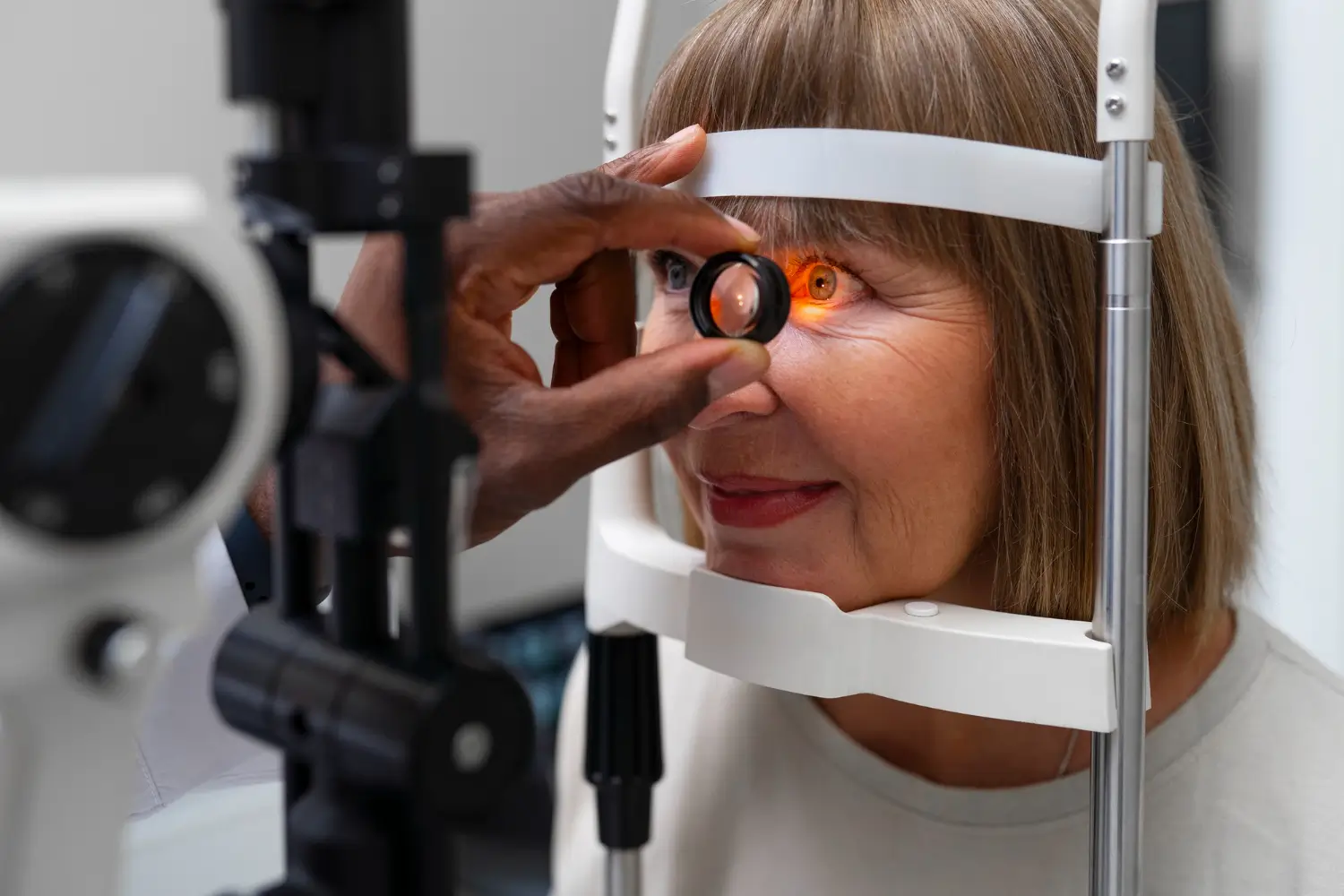Millions worldwide suffer from eye conditions that significantly impact vision and quality of life. In the United States alone, age-related macular degeneration (AMD) affects nearly 20 million adults, while diabetic retinopathy remains a leading cause of blindness. These progressive diseases can lead to severe vision loss if not properly managed.
Fortunately, recent advancements in ophthalmology have introduced innovative treatments like Vabysmo, a prescription medication designed to target key pathways involved in retinal diseases. By simultaneously inhibiting VEGF and Ang-2, Vabysmo offers a dual-action approach, presenting a promising option for patients seeking effective management of their condition.
This article provides a detailed overview of the potential side effects of Vabysmo, offering a comprehensive list to help patients and caregivers make informed, confident decisions about treatment.
Key Takeaways
- Doctors prescribe Vabysmo (faricimab-svoa) to treat retinal diseases such as wet AMD and diabetic macular edema (DME).
- The most common ocular side effects are generally mild to moderate and include conjunctival hemorrhage, eye pain, vitreous floaters, increased intraocular pressure (IOP), blurred vision, and ocular irritation or redness.
- Serious but rare adverse events such as endophthalmitis, retinal detachment, retinal vasculitis, and arterial thromboembolic events require immediate medical attention.
- Clinical trials (TENAYA, LUCERNE, YOSEMITE, RHINE) demonstrated that Vabysmo has a favorable safety profile comparable to existing anti-VEGF treatments, supporting its FDA approval.
- Proper patient education, sterile technique, monitoring of intraocular pressure, and prompt reporting of symptoms are essential for minimizing risks.
- Regular follow-ups and possible treatment adjustments help manage side effects and ensure optimal treatment outcomes.
About: Medical Spa RX provides medical practices with premium products at the best prices. If you’re looking to buy Vabysmo for your practice, the sales representatives at Medical Spa RX can give you guidance.
Most Common Ocular Side Effects of Vabysmo
The most frequently reported side effects of Vabysmo (faricimab-svoa) are ocular and typically occur shortly after the intravitreal injection procedure. These side effects are generally mild to moderate in severity and transient in nature. Common ocular side effects include:

- Conjunctival Hemorrhage: Small bleeding under the conjunctiva is common and typically resolves independently.
- Eye Pain: Patients may report mild discomfort or aching following the injection, usually subsiding within a day or two.
- Vitreous Floaters: Temporary floaters may appear post-injection due to air bubbles or minor vitreous disturbances.
- Increased Intraocular Pressure (IOP): A transient rise in eye pressure can occur after injection, often normalizing shortly after.
- Blurred Vision: Temporary blurring can result from the injection or the eye’s response to the medication.
- Ocular Irritation or Redness: Mild redness or itching may occur around the injection site.
Healthcare providers manage and follow up on side effects so they typically do not disrupt ongoing treatment and remain manageable within standard clinical care protocols.
Less Common But Serious Vabysmo Adverse Events
Although rare, some Vabysmo side effects can be severe and require immediate medical attention. These adverse events are often related to complications from the intravitreal injection procedure rather than the medication itself:
- Endophthalmitis: A severe eye infection characterized by pain, redness, and vision loss; requires prompt antibiotic or surgical treatment.
- Retinal Detachment: Sudden floaters, flashes of light, or vision changes may signal this emergency condition.
- Retinal Vasculitis: Inflammation of retinal blood vessels can compromise vision and, in some cases, contribute to complications such as cataracts if not quickly addressed.
- Arterial Thromboembolic Events: Though rare, systemic side effects such as stroke, myocardial infarction, or other complications related to blood clots have been associated with intravitreal anti-VEGF agents.
- Hypersensitivity Reactions: This side effect may include swelling, itching, or anaphylaxis in highly sensitive individuals.
A healthcare provider must educate patients on these warning signs and ensure timely access to urgent care when necessary to mitigate risks.
Clinical Trial Data on Vabysmo Safety (TENAYA, LUCERNE)
Researchers rigorously evaluated the safety and efficacy of Vabysmo in multiple large-scale, randomized clinical trials, including the TENAYA and LUCERNE studies for neovascular age-related macular degeneration (nAMD) and the YOSEMITE and RHINE trials for diabetic macular edema (DME). These pivotal studies supported the Vabysmo FDA approval by demonstrating the following key points:
- The incidence of ocular adverse events was similar to that of aflibercept, a standard comparator.
- Serious ocular events, such as endophthalmitis, occurred in less than 1% of patients.
- Most adverse events occurred due to injections and healthcare teams managed them with routine care.
- No new safety concerns emerged throughout these 48-week trials.
These findings suggest that Vabysmo maintains a favorable safety profile comparable to existing anti-VEGF therapies. Vabysmo requires fewer injections, which potentially reduces cumulative procedural risks.
Monitoring and Managing Side Effects of Vabysmo
Effective management and monitoring are essential to minimize side effects and maintain successful long-term treatment outcomes. Best practices include:

- Pre-injection Preparation: Topical antiseptics and a sterile technique are critical to avoid infections like endophthalmitis.
- Patient Education: Informing patients about what to expect post-injection can help them distinguish between common and serious side effects.
- Monitoring Intraocular Pressure: Especially important in glaucoma patients or those with a history of pressure fluctuations.
- Prompt Reporting of Symptoms: Patients should be instructed to report any unusual symptoms such as vision loss, severe pain, or intense redness.
- Follow-up Appointments: Regular check-ups allow early detection and management of delayed side effects or disease progression.
- Treatment Adjustments: Switching agents or adjusting treatment intervals may be necessary if side effects persist or worsen.
This comprehensive approach supports patient safety and optimizes therapeutic benefits throughout the treatment course.
Conclusion
Vabysmo represents a major advancement in treating retinal diseases such as wet AMD and DME. It combines effectiveness with a favorable safety profile and fewer required injections. While most side effects are mild and manageable, patients and providers must understand the full spectrum of potential adverse events, from minor discomfort to rare but serious complications.
Robust clinical trial data confirm that Vabysmo’s safety is on par with that of existing anti-VEGF therapies, making it a well-tolerated and viable treatment option. By maintaining vigilant monitoring and encouraging open patient-provider communication, healthcare providers minimize risks and support the best possible visual outcomes throughout therapy.
FAQs
1. What is Vabysmo used for?
Vabysmo can treat neovascular (wet) age-related macular degeneration (nAMD) and diabetic macular edema (DME).
2. How is Vabysmo administered?
Vabysmo is administered through intravitreal injection, meaning it is injected directly into the eye by a specialist.
3. How often do I need Vabysmo injections?
After the initial doses, injections may be spaced up to every 16 weeks, depending on the patient’s response.
4. Is Vabysmo covered by insurance?
Most major insurance plans and Medicare cover Vabysmo, but these may need prior authorization.
5. How does Vabysmo differ from other treatments like Eylea or Lucentis?
Vabysmo targets two disease pathways (VEGF-A and Ang-2), which may lead to longer dosing intervals compared to other anti-VEGF agents.
6. Can Vabysmo be used in both eyes?
Yes, but treatment in each eye is typically scheduled separately to minimize risks and monitor side effects effectively.
7. What should I do if I miss a Vabysmo injection?
Contact your retina specialist immediately to reschedule. Delaying treatment may affect vision outcomes.
References
Eye Health Data and Statistics | National Eye Institute. www.nei.nih.gov. https://www.nei.nih.gov/learn-about-eye-health/eye-health-data-and-statistics
WebMD. How to Keep Your Eyes Healthy. WebMD. Published October 4, 2011. https://www.webmd.com/eye-health/good-eyesight
Cleveland Clinic. Eye Diseases: What Should I Know About Them? Cleveland Clinic. Published May 2, 2024. https://my.clevelandclinic.org/health/diseases/eye-diseases





















